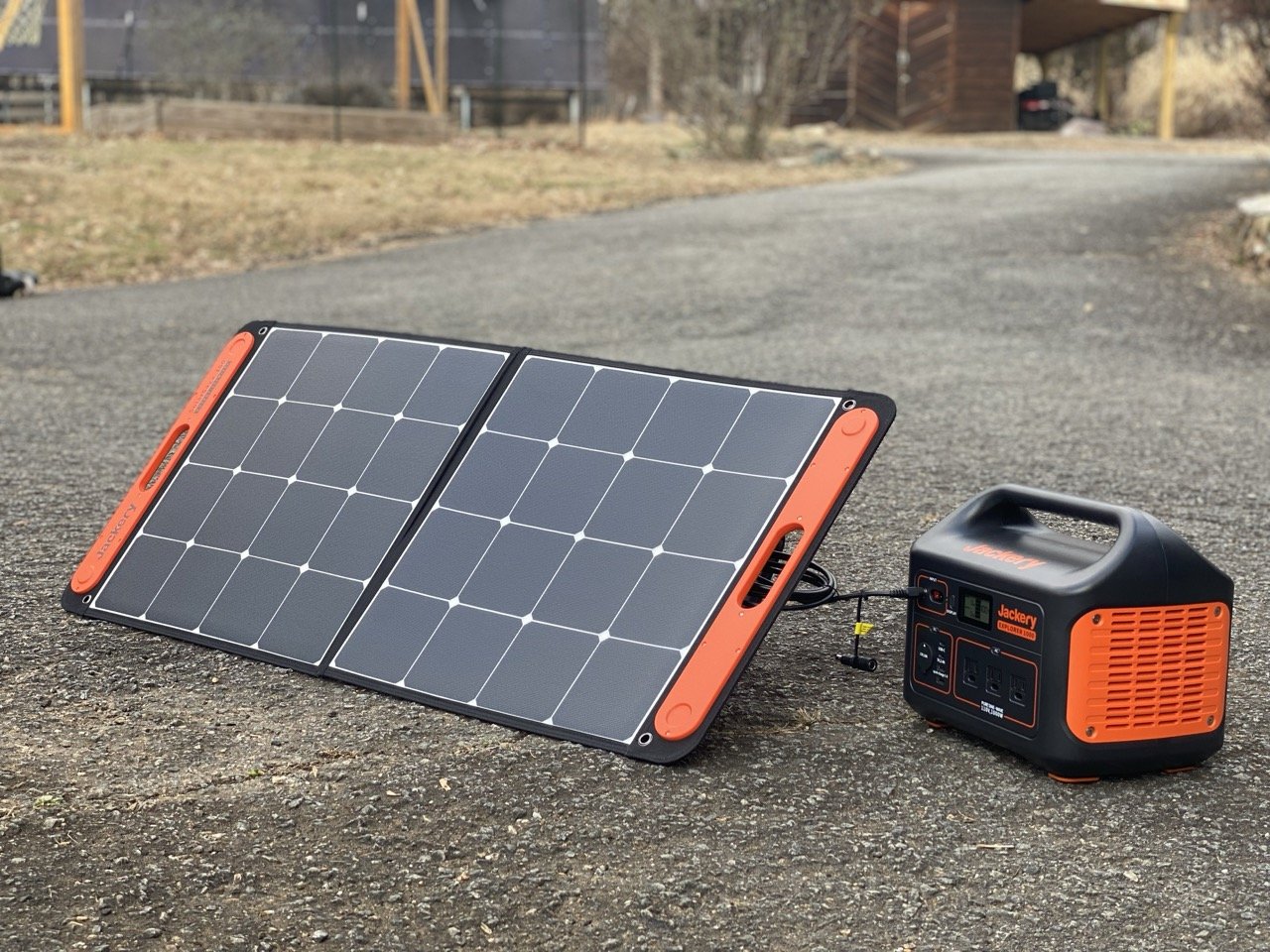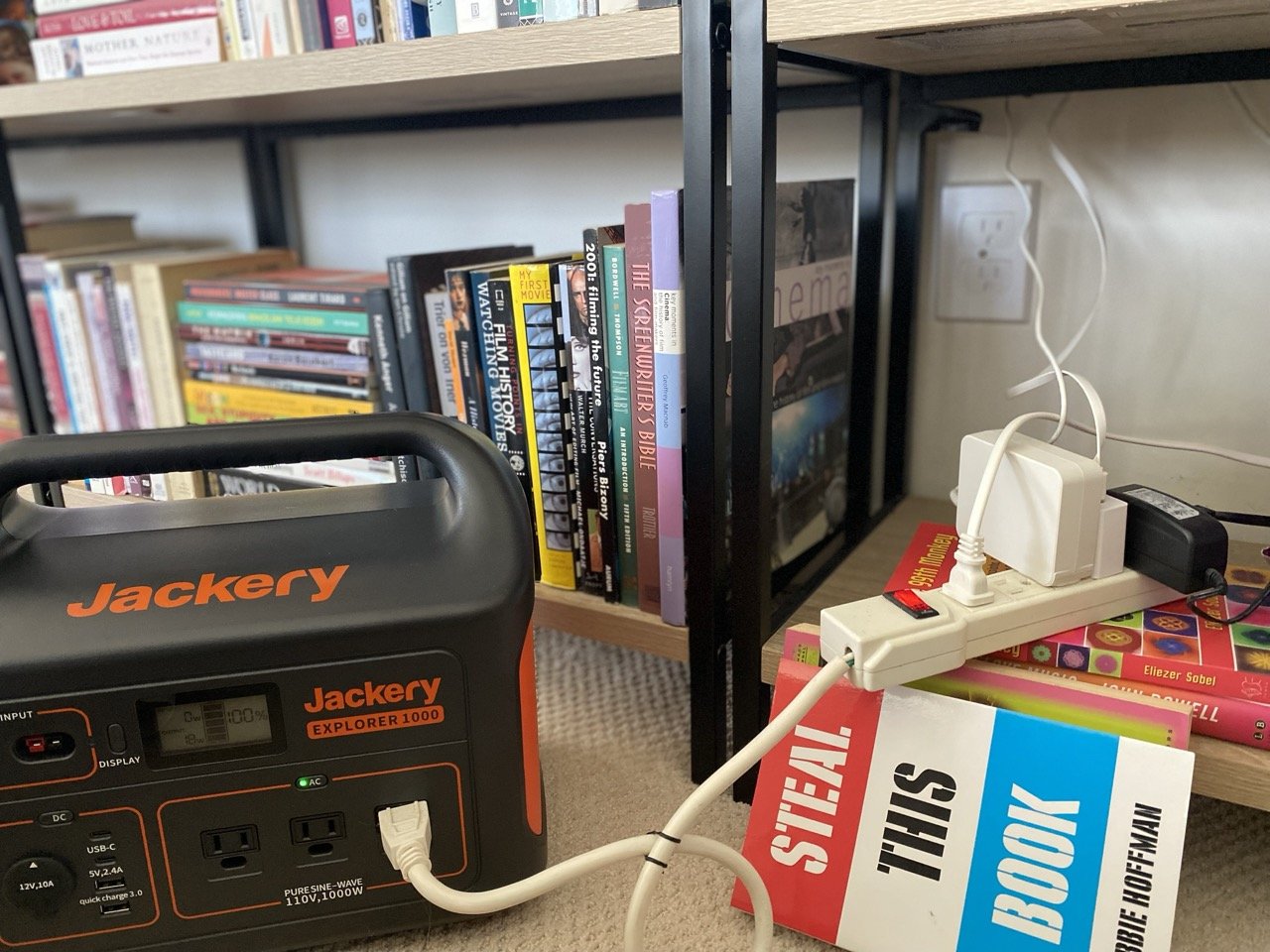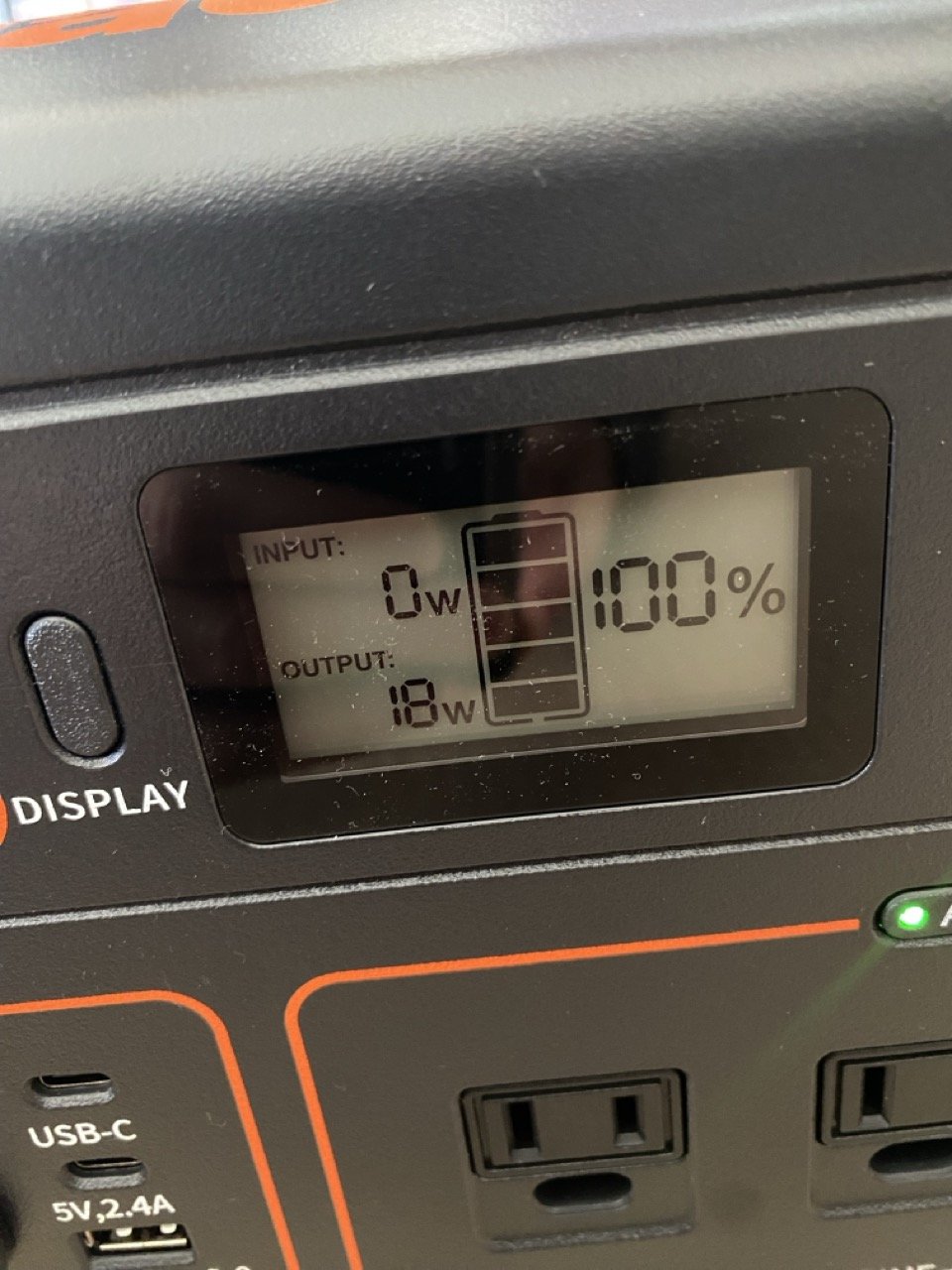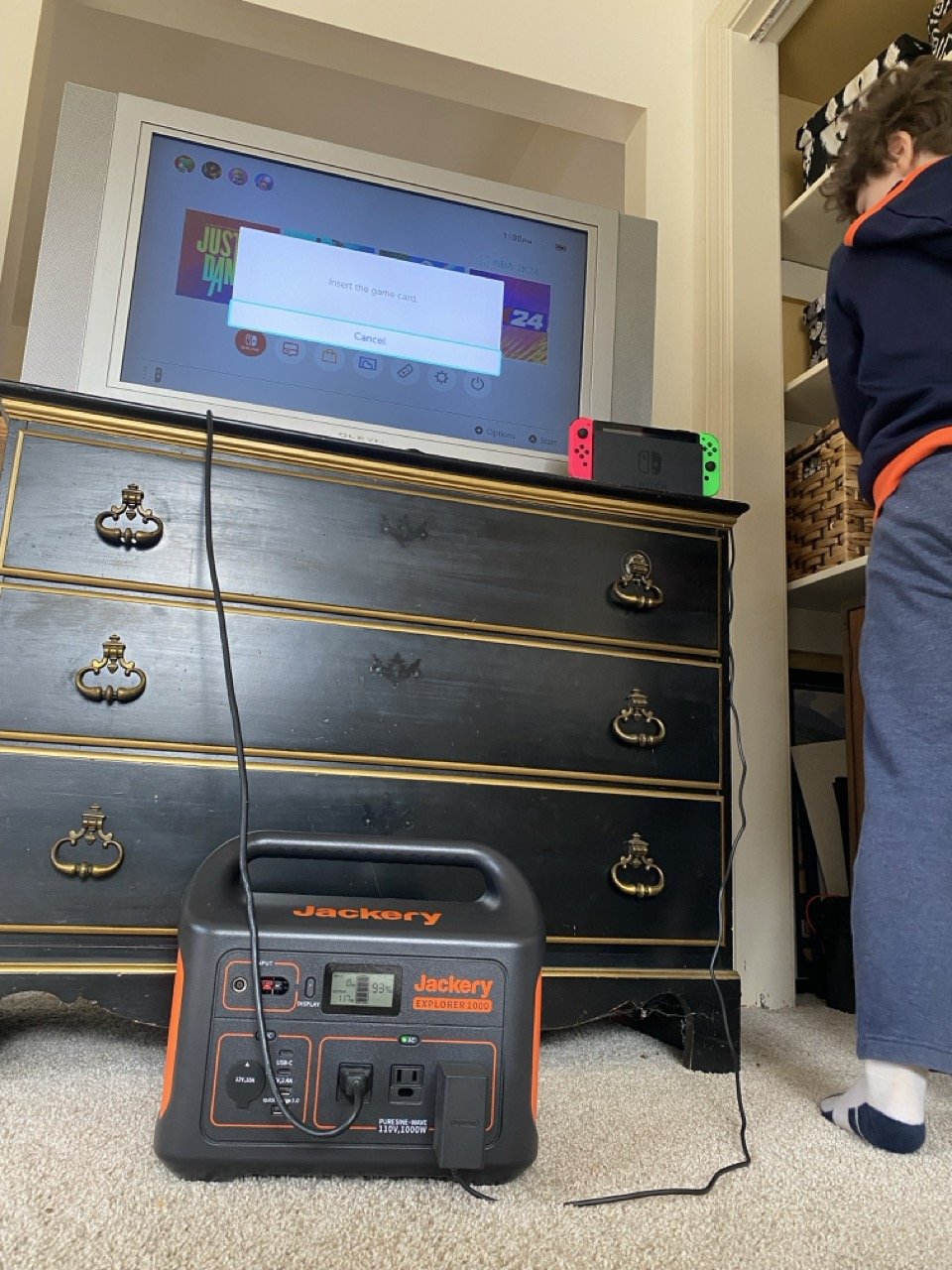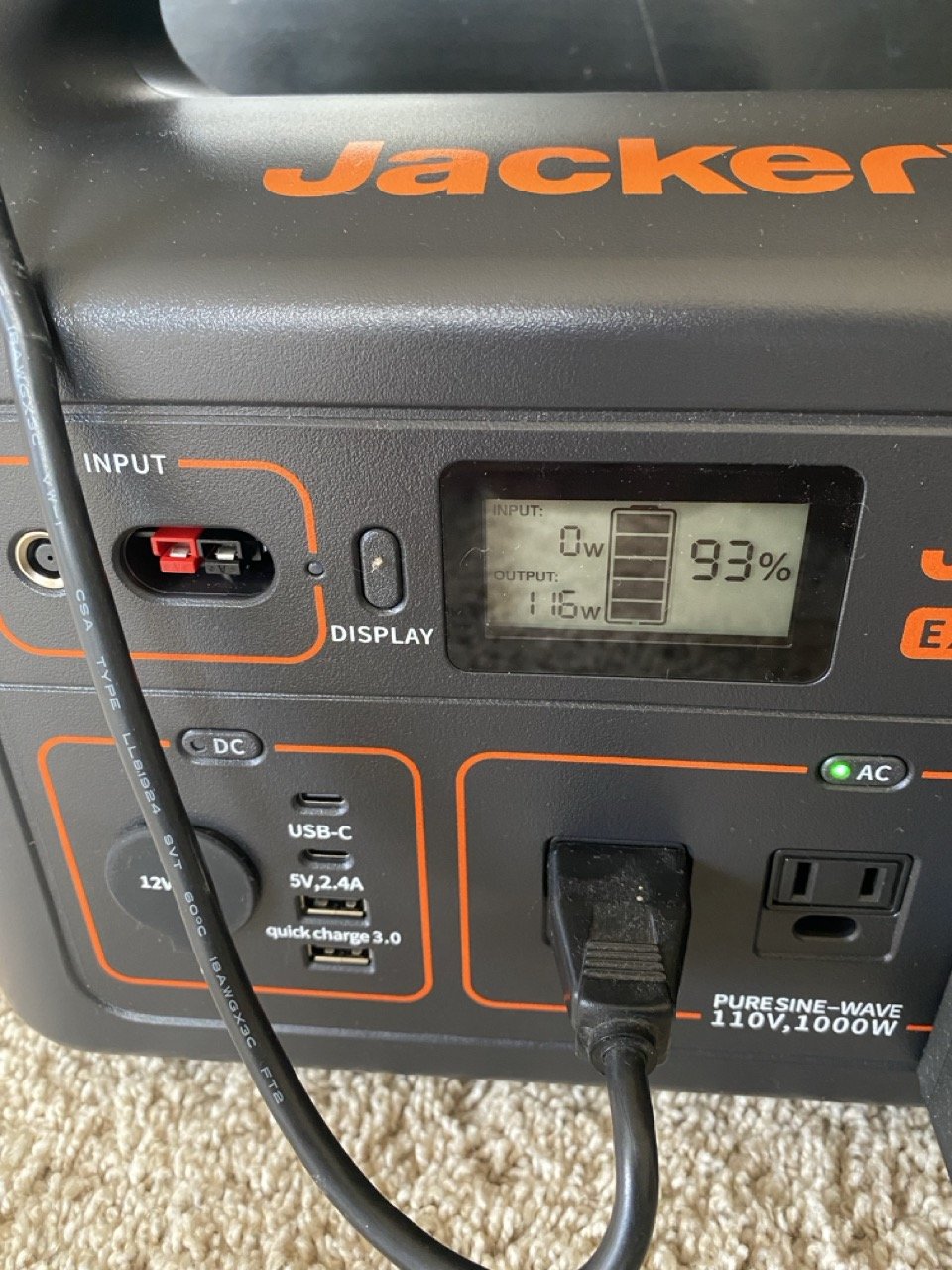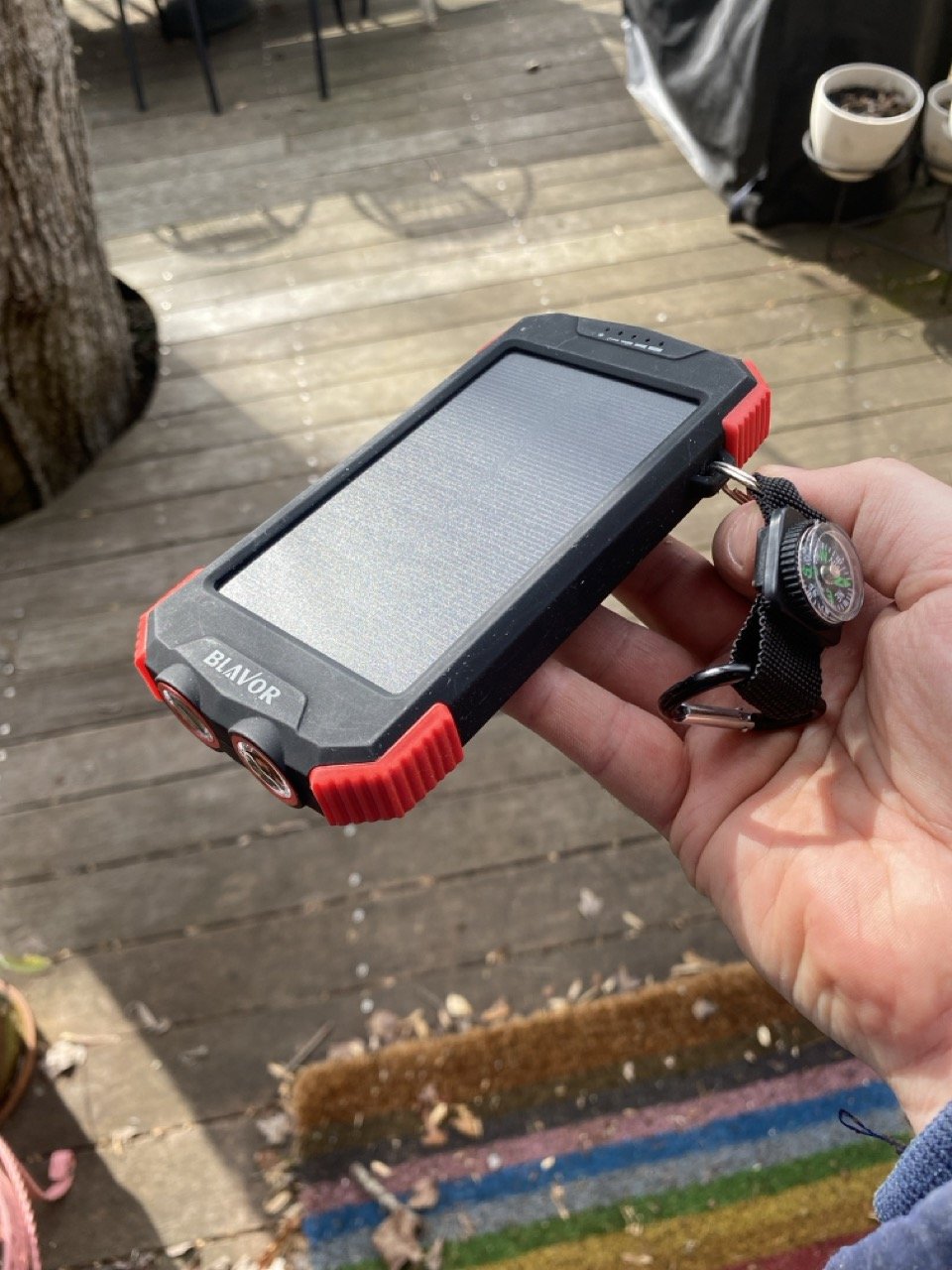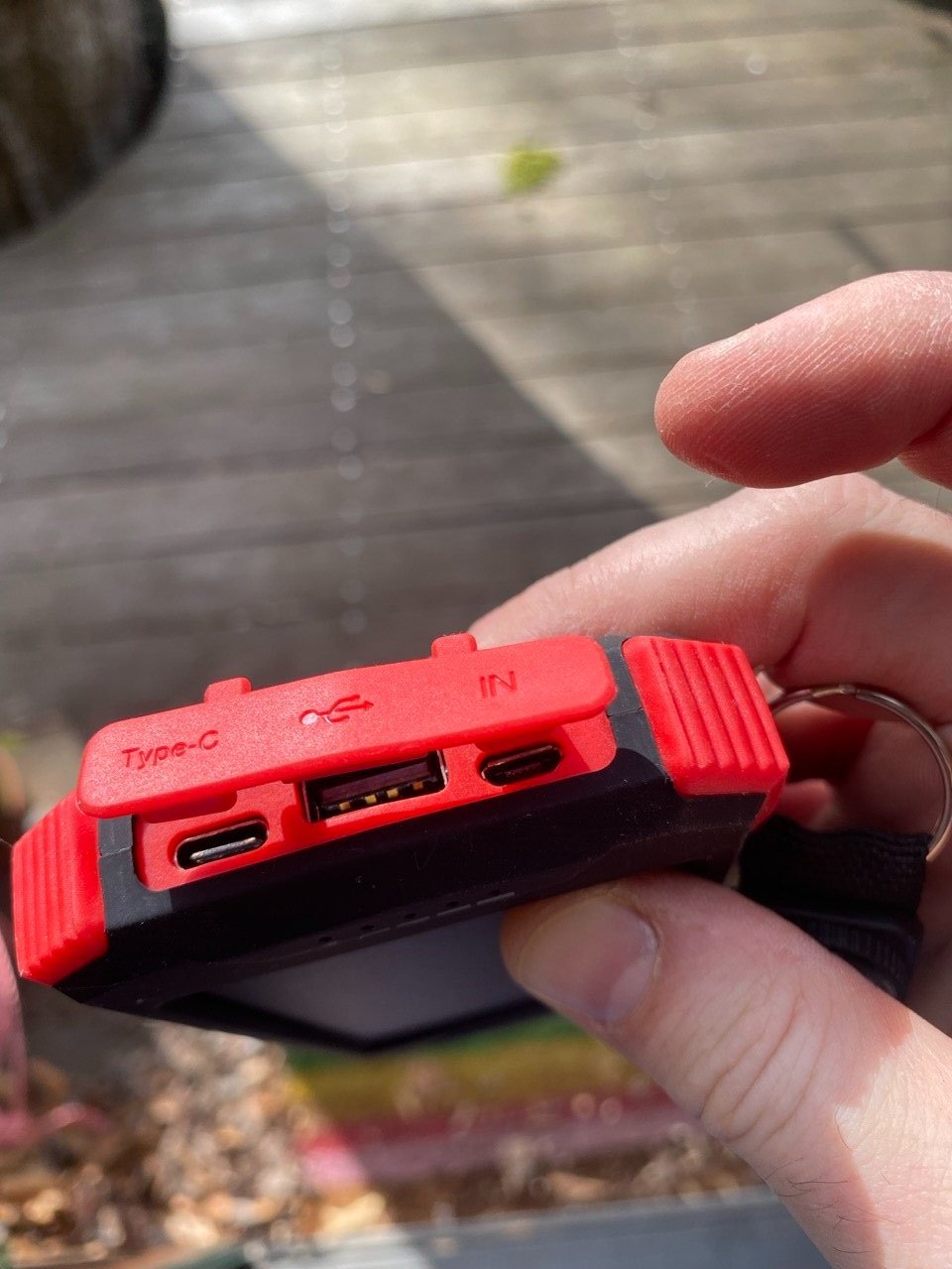How to Choose a Portable Power Station: Gas and Solar Generators
Introduction
If you’re prone to power outages, you’ll want to choose a portable power station, solar generator, or gas generator to keep as a backup. The benefits of our woodland homestead are many, but one drawback is that trees are known to fall, and every so often, they fall on power lines or other electrical things, and suddenly, hey, the lights are off. If we’re lucky, it’s a quick flicker and then back to Netflixing, but with large storms, we’ve experienced outages lasting a week or longer.
While our 6.8kW residential solar panels are environmentally friendly and seriously offset our electric bill, ours are grid-tied and we can't yet afford a full battery backup system or whole-house generator. So we've taken the interim step of experimenting with portable generators and power banks. Here’s what you need to know.
This post may contain an affiliate code or link that is no additional cost to you, and I may earn a small commission when a purchase is made.
Choosing a Portable Power Generator
I haven't tested dozens of brands and this won't be an exhaustive comparison. But I did a good bit of research to make my selections and here I'll walk you through our Large, Medium, and Small varietals, including:
Large: a Troy-Bilt 7000 Watt XP Series Portable Gas Generator
Medium: a Jackery Explorer 1000 Watt Portable Power Station + SolarSaga 100 Solar Panels
Small: a BLAVOR Solar Charger Power Bank
Note: our Troy-Bilt gas generator has been discontinued and is no longer for sale, so I'll also recommend some comparable and well-reviewed alternatives below.
1. How Does a Portable Power Station Work?
A portable gas generator converts gasoline into electrical energy through an internal combustion engine, like a working version of this magnificent and maddening model V8 I made with Jack during the pandemic. You pull the starter, the engine ignites the fuel, and a bunch of controlled explosions move some pistons and generate power in the form of mechanical energy, which is then converted into electrical energy through an alternator. It's like magic, albeit dirty fossil fuel magic.
With a solar option, it basically functions more like a large battery pack. The LiFePO4 battery (a subtype of lithium-ion batteries that are safer and more efficient, with a longer lifespan) stores electrical energy and an inverter converts this into usable AC power. Power stations typically include a few different charging INPUT ports so you can recharge its battery using various sources (e.g., solar panels, car chargers, AC adapters, DC power sources).
Whether gas or solar, the power station will include a bunch of OUTPUT ports where you plug in your appliances or devices. Output ports might include your typical AC 3-prong plug (110V or 120V), as well as USB-A and USB-C ports, and with larger generators, probably a larger 240V outlet for something like a clothes dryer or water heater.
2. Pros and Cons of Solar Portable Power Stations vs. Portable Gas Generators
So you're looking for portable power, you've got two primary options: gas vs. solar. Lots of pros and cons with each:
Portable gas generators:
Can provide continuous power for extended periods of time
Can provide a much higher overall output of energy (watts) for a much lower upfront cost. For instance, here’s a great 13,000-watt DuroMax unit for about $1000.
They use regular unleaded gasoline or propane or diesel (some generators are dual-fuel, and you can also buy a hook-up like this to adapt a single-fuel generator to run on a second fuel source).
So...if it's easy to get ahold of fuel, with the gas option you can generate major power to run appliances and systems like a furnace, well pump, sump pump, fridge, or air conditioner.
The downside is that gas is kind of a pain in the ass — it runs out, it gums up your engine if not properly maintained, it smells, it's flammable, it's dirty, it's bad for the environment, you know: all the things that suck about gas. Gas generators are also noisy AF, and it's a bummer to wander a snowy neighborhood and hear angry engine noise killing the proverbial vibe.
On the other hand…
portable solar generators:
Harness the awesome and mighty power of the sun god Ra to generate electricity
Most can also be recharged by plugging into a regular home wall outlet or car charger
They're eco-friendly and require no fuel access/costs
They're quiet as a church mouse
They don't emit any fumes and can be used inside the home, car, or other enclosed space, no problem
They're generally much smaller and lighter than their gas counterparts, so you can carry them from room to room
They have no moving engine parts, so they rarely break down or need to be serviced.
So...when fully charged, depending on the overall wattage, they'll power many medium-sized appliances and smaller devices, making these guys ideal for short-term power outages, outdoor/camping/tailgating activities, and emergencies in sunny locations.
They are more expensive upfront “per watt.” I got my Jackery 1000-watt unit on sale for about $650 (coupons abound!), but the regular price is around $1000 — a similar price as the 13,000-watt DuroMax dual fuel unit above. Still, I haven't done an exhaustive analysis, but given the price of gas and repairs, I feel fairly confident that, watt-for-watt, solar/battery also ends up being of comparable cost in the long term.
While they have more limited power output, higher upfront cost, and rely on sunlight, if you're generally dealing with power disruptions of less than 24 hours, the portable solar option is a great way to go.
3. Applications and Uses of Portable Gas Generators
Back in January 2022 when the power in our neighborhood was out for about 8 days, I really wished I had a gas-powered generator. A bunch of intrepid neighbors were equally frazzled, and ended up springing for whole home standby generators like this. It is a great preparedness investment, so…respect.
But this is also a costly scenario: when you factor in the price of the generator itself (maybe $5-7K), the installation and electrical work (another $5-10K), installing a natural gas or propane tank if you don't have one already (maybe another $2-3K), and then replenishing this fuel regularly (maybe $1K per year), you're likely looking at a $15,000-$20,000 investment.
I'm a cheapskate, and when my next-door neighbor Wayne sprung for his whole house Generac, he unloaded his portable Troy-Bilt 7000 Watt XP Series Portable Generator for a song. He was kind enough to show me how to start it (see video) and, importantly, how to use the fuel valve to ensure the gas doesn't sit in the carburetor for months on end and muck up the works.
This particular Troy-Bilt model has been discontinued, but here are some comparable and well-regarded gas generators:
DuroMax XP13000EH Dual Fuel Portable Generator
It gives me peace of mind to have this item on hand, even though I've barely used it. Typically, during a shorter-term outage, we're able to get by using our Jackery, our wood stove for heat, plus the kindness of friends, relatives, and neighbors. Still, knowing that, in a pinch, I could power our fridge, water heater, and other major appliances? It’s top-shelf preparedness insurance to have on hand.
4. Applications and Uses of Portable Power Stations
Jump ahead to January 2024, when the power in our neighborhood was out for a weekend. Luckily, I'd just purchased this Jackery Explorer 1000 Watt Power Station + SolarSaga 100 Solar Panels. It did the trick.
The power went off in the morning, and it was a workday, so, first thing I did was plug in my modem and WiFi router and the internet miraculously jumped back to life (this may or may not be a long-term fix, depending on your situation; my neighbor Keith (who has multiple Jackeries!) explained that most cable/internet lines continue to function on a battery system after the power goes out, but these batteries are only good for like 2-4 hours. Xfinity came out to our neighborhood and apparently put a generator on their box on our street, so that extends service much longer than that).
If you want to get into the details of how long these things last, see below, but TL;DR - this Jackery setup is a perfect solution for:
Powering or recharging low-ish wattage appliances and devices like laptops, smartphones, mini-fridges, coffee makers, microwaves, modems, routers, TVs, etc.
Camping, tailgating, outdoor events, and other emergency or non-emergency spots where you need a few hours of power
Bringing a super portable battery source to others who might be in need of a recharge
5. How Long Do Portable Power Stations Last?
So, how long does the battery last? That depends on the capacity of your model and the operating wattage of the device(s) you plug in. Generally speaking, the Jackery 1000 website explains that:
Working time = 1002Wh x 0.85 / operating wattage of your devices
My modem/router situation only drew a paltry 18 watts, so theoretically that would give me about 47 hours of working time if that's the only thing I ever plugged into the Jackery.
With school canceled, the kids eventually got bored and I was able to easily bring the Jackery downstairs and plug in a TV and Nintendo Switch (total 116 watts), which I theoretically could've powered for about 7 hours.
But when the temperature dropped at night, I tried plugging in a 600-watt space heater, and this would've drained the Jackery in about 80 minutes, so we just stuck with the warmth of our wood stove and got under the covers.
Luckily, a working wall outlet fully recharges the Jackery from zero in about 7 hours. I'd only used a portion of my battery, so when I popped over to a friend's house who had power, I brought the Jackery with me and was able to top off there. And when the power at my house came back briefly the next day, I also got a quick recharge.
I tried charging a bit in my car and it was slow going: the Jackery website says it takes 14 hours to fully recharge with a 12V car adapter.
With one SolarSaga 100W solar panel, on a sunny day you can fully recharge in 11 hours, or you can daisy chain two of these 100W solar panels together to recharge in 7.5 hours, about the same time as the AC adapter in a wall outlet.
6. What If I Need a Little More or Less Power?
With all of the above, in order to right-size how much power you need, it's best to focus on watts. Look at the devices or appliances you want/need to power, find the manual, or Google how much wattage they each require (you might be surprised), and pick a generator or power station with enough wattage to cover that need.
Most brands offer a pretty wide variety of sizes to fit different needs. I have the Jackery Explorer 1000 (1000 watts), but their larger systems beef up to the Jackery Explorer 2000 Plus kit that can expand all the way up to 6000 watts (24 kWh), allegedly providing up to 2 weeks of off-grid living; and they scale down to the adorably palm-sized Jackery Explorer 100 watt version for on-the-go small device charging.
Goal Zero and EcoFlow are two other reputable brands that offer a similar array of options. I won't go into a side-by-side comparison, but check out:
the Goal Zero Yeti series of portable power stations and the Goal Zero Haven series of larger, expandable home backup systems.
the EcoFlow River series of portable power stations and the new EcoFlow DELTA Pro Ultra series that expands to up to a month of off-grid whole home power.
The Little Cousin: Solar Charger Power Banks
Finally, when I'm just looking for a little mobile solar-generated power, I use my BLAVOR Solar Charger Power Bank, which can wirelessly and magnetically charge a phone, or plug right in with USB-A, USB C, or Micro-USB charging ports.
It’s also got an adorable compass attached, and a built-in flashlight that’ll go for like 100 hours on a full charge.
Great to bring on a hike or stash in a go-bag.
Conclusion
While the natural gas or propane whole home standby generators and portable gas generators may still be a good choice for those with large homes to heat, expendable income, and reliable access to fuel sources, I'm finding portable power stations to be the right choice for more short-term outages.
I have friends and neighbors who have several portable power stations of different sizes — with a larger one devoted to the fridge, maybe another for the WiFi, and smaller ones they can take room to room to make coffee or recharge a laptop.
These safe, low-maintenance, eco-friendly battery systems are growing in capacity and popularity, and coming down in price, to the point where true home backup systems are possible without going the problematic and expensive gas/propane route.
Frequently Asked Questions
What is the average lifespan of portable power stations and how can I maximize their longevity?
The lifespan can vary depending on the quality of the components and how well you maintain them, but many can last 5-10 years or more with proper care and usage. To maximize their longevity, it's best to store them properly, prevent excessive discharge, use a charge controller, and perform periodic maintenance. Proper care can extend the usable life significantly. Also, try not to spill coffee all over them.
Are there any limitations or restrictions on recharging solar power stations in different geographic locations or weather conditions?
There are some limitations when recharging solar power stations in certain conditions. Performance may be reduced on cloudy days or in areas that receive less sunny weather. Extreme cold temperatures can also lower charge efficiency. Positioning the panels to maximize sun exposure can help offset these issues, so using a portable panel that allows you to change direction can also help in suboptimal conditions. With proper planning and positioning, solar power stations can be effective in most regions.
How do portable gas generators compare to solar power stations in terms of noise pollution and environmental impact?
Portable gas generators often produce significant noise pollution, sometimes as high as 60-75 decibels depending on the size. This can make them disruptive to use in campsites or residential areas. Solar stations operate silently which is a major advantage for many situations. In terms of environmental impact, gas generators also emit harmful emissions like carbon monoxide, nitrogen oxides, and unburned hydrocarbons. Solar power stations produce no emissions in operation. However, there is some environmental impact in producing the batteries and panels, while gas is a fossil fuel that directly produces emissions. Overall, solar power stations are considered way more environmentally friendly, especially in use, but gas generators provide more continuous power output as long as fuel is available. With solar, you are dependent on sunny conditions for recharging. TLDR, solar power stations are preferable for environmental and noise considerations, but gas generators can provide steady power output as needed.
